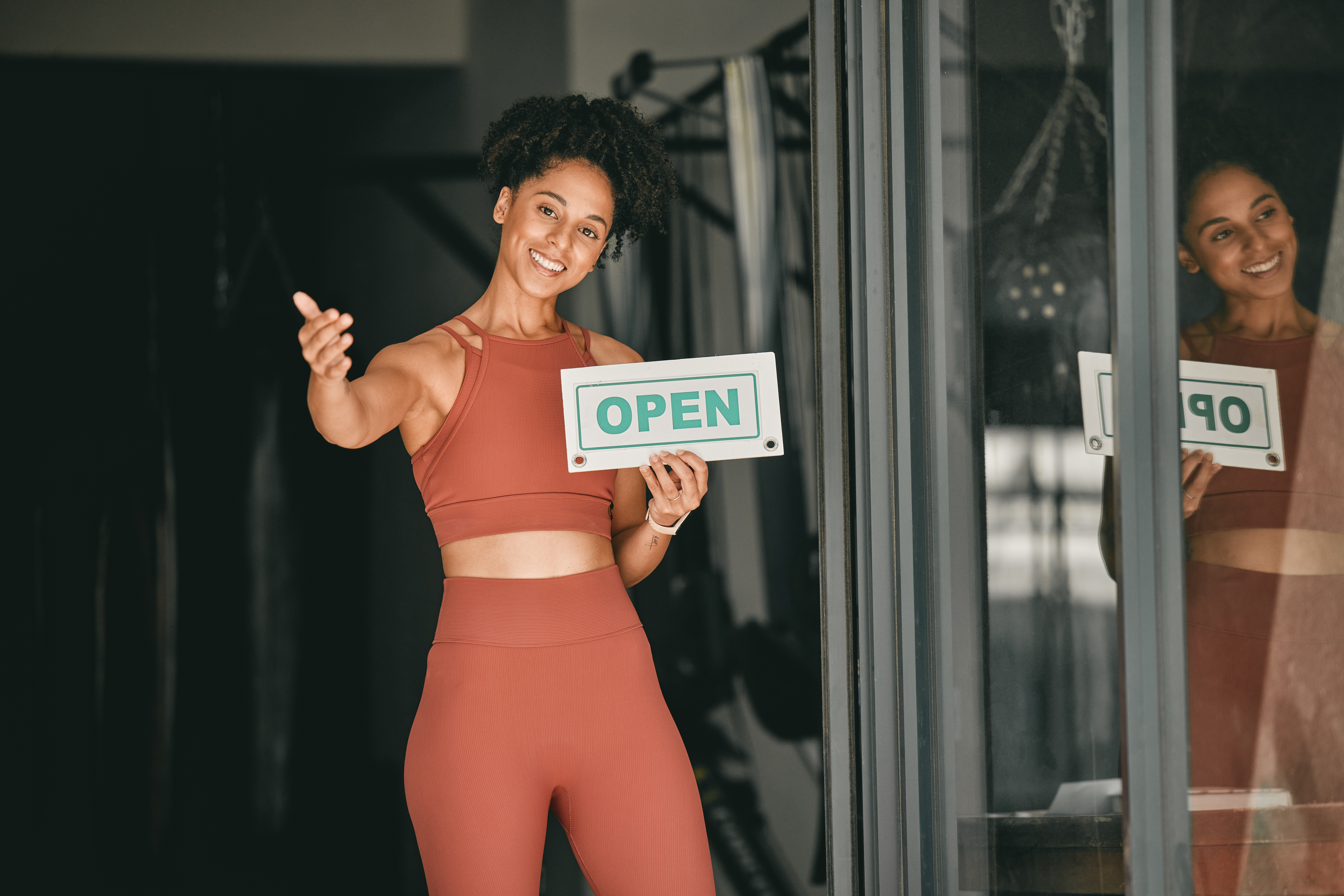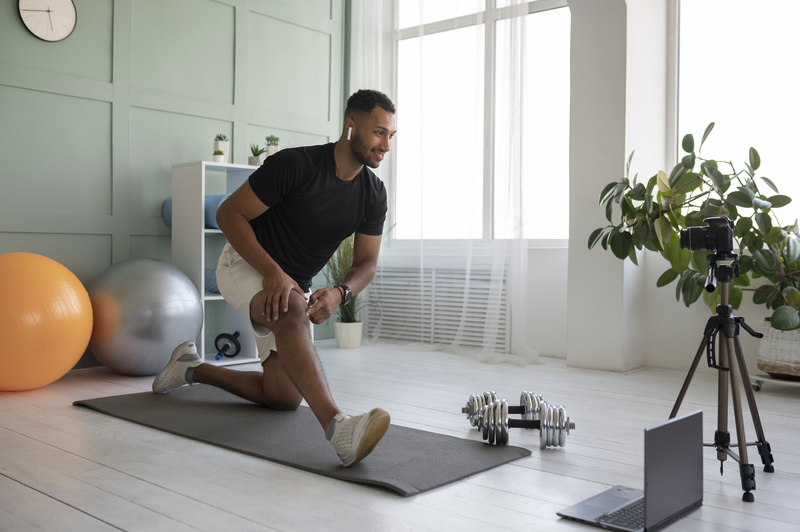There’s no question about that and it doesn’t look like it’s slowing down anytime soon. If you ask me it’s not a question of whether you should get into video content creation and video marketing, but how can you do it faster and better.
That’s why I’ve written this how-to guide to help you nail down your production process and start getting results with video marketing.
Why Start with Video Marketing?
Research shows that more than 80% of businesses use video marketing and it is estimated that more than half of those who are not using video marketing yet will start to do so this year. And why wouldn’t they? Videos will increase organic traffic, will increase sales and will help your customers understand your products or services better. 85% of the consumers say they want to see more videos from their favorite brands.
When we’re talking about fitness, people want to see results. They don’t want to read about them or hear about them, they actually want to SEE them. Let’s be real, most of the guys and gals sign up for a gym membership mainly because they want to look better physically. Yes, fitness will also make you healthier, maybe more disciplined and organized, but usually those things show up on people’s lists later down the road.
Potential clients are much less concerned whether you were certified through NASM or ACE , or any of the other reputable personal trainer certifications and much more interested in what kind of results you can achieve, so videos are the perfect way to showcase those stellar results.
Now, the not so great part about videos is that it will take a lot of resources to put together. You need to think them through, find a place to film, shoot everything, then re-shoot if need. Then you need to edit all the raw footage into a nice looking video and push it all out on different platforms.
So there’s an entire process behind video marketing that may sound overwhelming at first, but once you get to know your way around it, things will start running pretty smoothly.
Step 1. Write It All Down
First and foremost you want to plan ahead.
Just having a topic that you want to cover in the video is not enough. You need to actually sit down and write a script or even a storyboard if you already have particular scenes in mind.
The reason you want to do this is not only because you don’t want to leave anything out, but because you want your video to be very well structured. Your videos should have 4 different sections:
- The Hook
- The Intro
- The Body
- The Call to Action.
The Hook
The hook is the most important part. That’s what people see when they hit play or scroll through their Facebook or Instagram wall. If you don’t grab their attention in the first 5 seconds, you’ve lost them forever. They will just keep scrolling, ending up watching someone else’s video.
So make the very beginning of the video catchy, funny, but also let them know right from the start that your video is going to help them solve a problem that they have.
The Intro
After you got that out of the way you can introduce yourself, tell them your name and who you are. Most people do this the other way around which is not optimal. As harsh as it may sound, your audience doesn’t want to know who you are. They want a solution to a problem. So start with that.
The Body
From there, you present to them the solution, explaining or showing the necessary information. This could be a workout video, a cooking video or a transformation video and so on.
The Call to Action
Lastly but not least, you want to wrap up all your videos with a call to action. You don’t want to just let your viewers jump to the next video. Tell them to go and watch another of your videos, send them to your website for a free assessment or ask them to like or share your video. Alright, after you have your script ready, it’s time to move on to step 2!
Step 2. Video Production
This is where all the filming happens. This is where you are shooting all your footage, including main scenes as well as B-roll or any other type of shoots you think you might need for your final video.
Speaking of the final video, you want to have in mind a pretty good idea of how you would like it to look before you actually start filming. This will help you capture exactly the type of scenes that you need when you’ll be editing the video.
What You’ll Need to Start Filming
- A camera. You don’t really need anything super expensive. Heck, even your phone can capture amazing looking footage if the conditions are right. And by the right conditions, I’m talking mostly about lighting, which leads us to the next point.
- A lighting setup. Avoid filming in dark places, or if you do, use a lighting setup. If you’re shooting outdoors you will be fine, but if you’re inside a gym or fitness studio you might want to consider additional lighting.
- A way to control camera movement. Right after poor lighting, the next thing that can break a video is camera shake. If you don’t need to move the camera around just use a tripod and you are done. Problem solved. But most of the times, in fitness videos you need to move the camera a lot. You want to follow your athlete or show people around the gym or the kitchen, or whatever it may be. In this case, you may want to consider investing in a gimbal or a stabilization rig which will help you capture buttery smooth scenes.
- An audio setup. If there’s very little background noise, your in-camera microphone might be good enough. If it’s noisy or echo-y, you’ll need an external mic such as a lavaliere .
Step 3. Video Post-Production
Once you’re done filming you need to get all that footage edited into the final video cut. This process will take quite a bit of time and skill that you will learn over time. It’s a pretty creative task, so it’s something very subjective. If you like it and you’re happy with the final product, then it’s fine.
1. Pick a Software
Obviously you will need to get your hands on a piece of video editing software . There are a bunch of options out there starting from free basic applications to more advanced stuff that will cost a few hundred dollars.
2. Start Editing
Just trim out the footage that you don’t need and cut and stitch everything together so that it follows the script you wrote at step #1. Sure, you can add some nice transitions in there, maybe a nice background audio – music tends to work really well in fitness videos – some nice animated text overlays if need be and so on.
3. Export Your Finished Video
Once you’re done editing, you want to export your video in an HD format that you can then upload on your favorite platforms. The only social media platform which it is a bit funky when it comes to the resolution of the video is Instagram because it uses that square format. So for Instagram, you will need to export in 1080x1080 instead. And also keep your video under 60 seconds.
Step 4. Promoting Your Video
When it comes down to marketing your videos, these days any platform out there will promote your clip like crazy in an attempt to take on YouTube, which has become huge. I remember reading somewhere that users spend on average 1.5 hours on YouTube each day. That’s crazy. No wonder everyone wants a piece of it.
1. Get on Facebook, Instagram & LinkedIn
Both Facebook and Instagram, and lately LinkedIn too, will promote any video content you throw at them. But it has to be self-hosted. Meaning that you need to upload that video to Facebook and LinkedIn as well, not just share a YouTube link. They don’t like that.
2. Be Consistent on YouTube
Leaving that aside, obviously the biggest video platform right now is YouTube and the key of growing on YouTube is consistency. That’s the main thing YouTube’s algorithm looks at. You want to be consistent with your postings. It can be just once a week or it may be every single day, but once you figured out your pace, you want to be consistent with it.
If you break the flow and skip a couple of uploads YouTube will stop showing your videos as much. It will take you weeks or months to get back to where you were. So consistency is super important with YouTube.
3. Put Time Into Titles & Thumbnails
You also want to write catchy titles as well as design eye-catching thumbnails. I would even go as far as to recommend making them semi click bait, but don’t go overboard with it because you can put viewers off or even get reported for abuse. Just try to make your titles and thumbnail stand out for more reach.
Conclusion
Video content is hard to produce, much harder than written content. But it looks like video marketing it’s the future, and getting in on the game early will help build a bigger viewership, drive more leads and sales. Follow these tips, and you’ll be off for a running start in video marketing.



